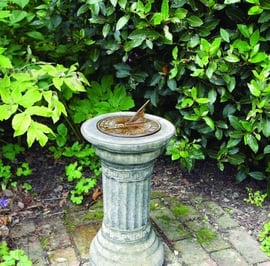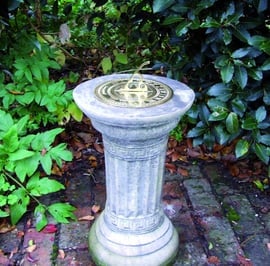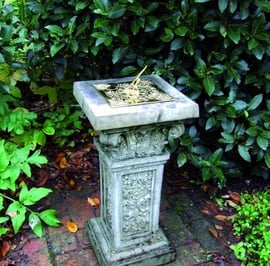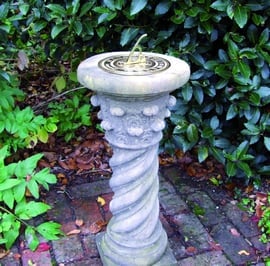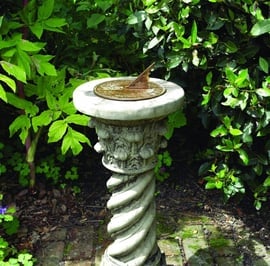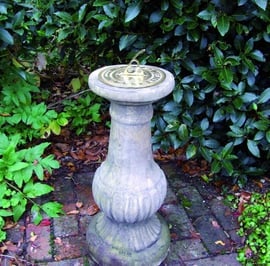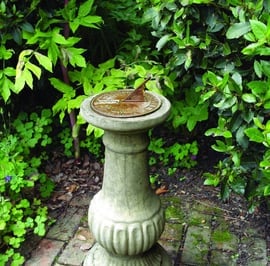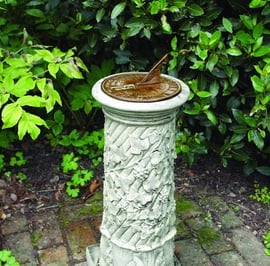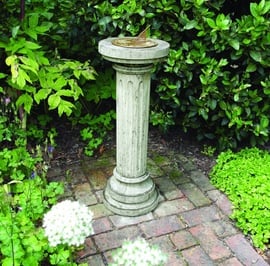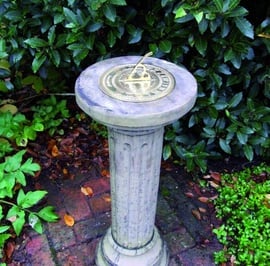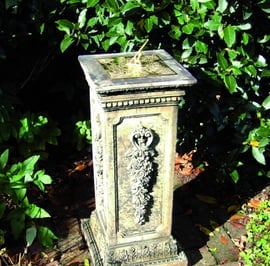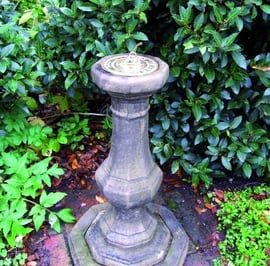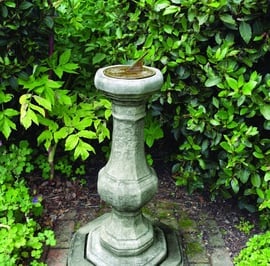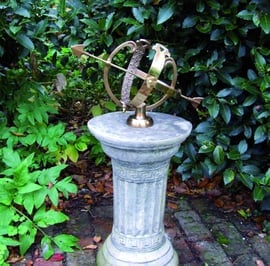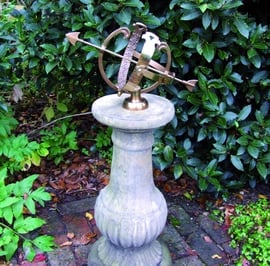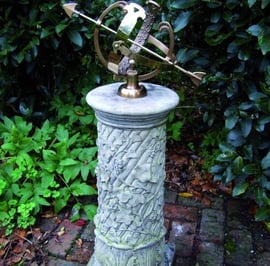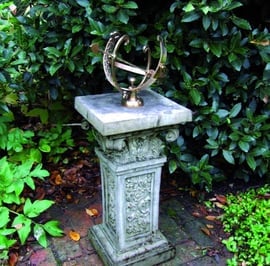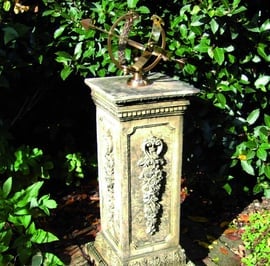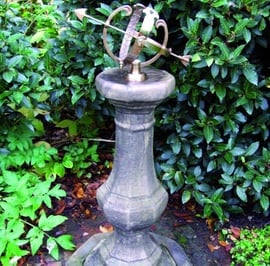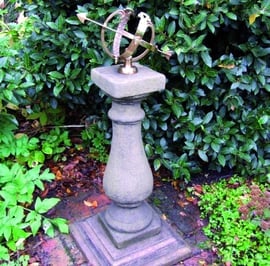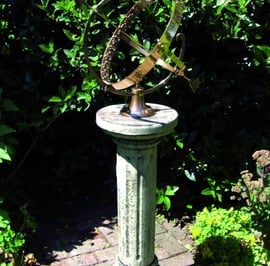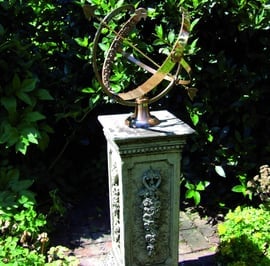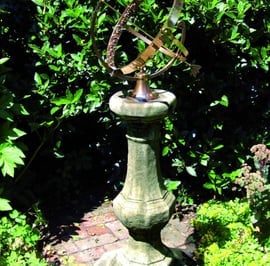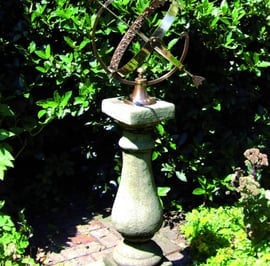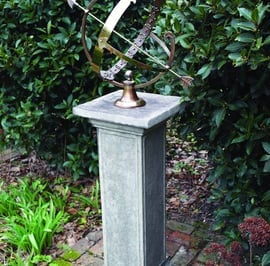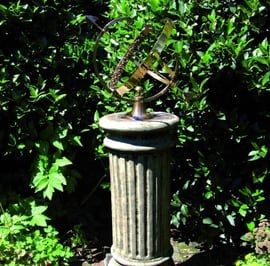About Our Stone Garden Sundials 🌞
A stone garden sundial does more than tell the time—it creates a focal point that connects your outdoor space to centuries of horticultural tradition. Our collection features handcrafted designs ranging from classical stone sundial pedestals to ornate armillary spheres, each built to weather beautifully across British seasons.
Browse aged brass sundials with traditional Roman numerals, polished brass dials that catch afternoon light, or striking classical stone columns that serve as sculptural centrepieces. Every sundial in our range combines durable, frost-proof reconstituted stone with precision-crafted metal components.
Key Features ✨
- ✓ UK Craftsmanship: Handcrafted from reconstituted stone.
- ✓ Weather Resilience: Frost-proof construction rated to -15°C.
- ✓ Custom Finishes: Available in Aged or Polished Brass options.
- ✓ Stability: Weights ranging from 15kg to over 85kg.
- ✓ Natural Aging: Develops a desirable patina over 2-5 years.
Choosing Your Stone Garden Sundial ⏳
Pedestal Sundials
These feature a flat horizontal dial plate mounted on a stone column. They suit formal gardens, period properties, and those who appreciate clean, symmetrical lines. Our pedestals range from 60cm cottage styles to 120cm statement pieces.
Armillary Spheres
These represent the celestial globe through interconnected metal rings. These sculptural designs work as garden centrepieces or focal points in stone garden ornament collections. Particularly striking when catching low morning or evening light.
Material Considerations
Aged brass dials develop a natural verdigris patina that complements weathered stone—ideal if you prefer the antique look without maintenance. Polished brass maintains its golden shine with occasional cleaning (a soft cloth and brass polish every 3-6 months).
Stone pedestals require minimal care. Let rain handle most cleaning, or scrub gently with water and a stiff brush to remove lichen or moss. Our stone bird baths and garden decor collections share the same durable stone materials if you are looking to create a coordinated garden theme.
Frequently Asked Questions
The gnomon (the raised triangular piece) casts a shadow onto the dial face as the Earth rotates. This shadow moves across hour lines etched into the dial, indicating solar time. The gnomon angle must match your latitude—approximately 51-55° for most UK locations—for accurate readings.
Your sundial must point to True North, not magnetic north. The difference (called magnetic declination) is currently about 1-2° west in the UK. Use a map, an online compass correction tool, or align with Polaris on a clear night. A standard compass alone will often lead to a slightly inaccurate setup.
Position your sundial on a solid, level surface in an open area that receives direct sunlight from at least 9am to 3pm. Avoid spots where trees, buildings, or large metal garden ornaments will cast shadows across the dial during midday hours.
Sundials show Solar Time, which differs from "Clock Time" by up to 16 minutes depending on the season. This natural variation—called the Equation of Time—occurs because Earth's orbit is elliptical rather than perfectly circular. Many owners appreciate this connection to natural rhythms rather than viewing it as a flaw.
A sundial uses a flat plate with hour markings and a gnomon to cast shadows. An armillary sphere represents Earth's celestial sphere using rings showing the equator, tropics, and meridian lines. Both tell solar time, but armillaries are primarily chosen as decorative, architectural sculptures.
Our stone garden sundials start from £175 for compact cottage designs and range to £1,875 for large armillary spheres on ornate pedestals. Mid-range options between £300-£600 offer an excellent balance of size, detail, and presence.
